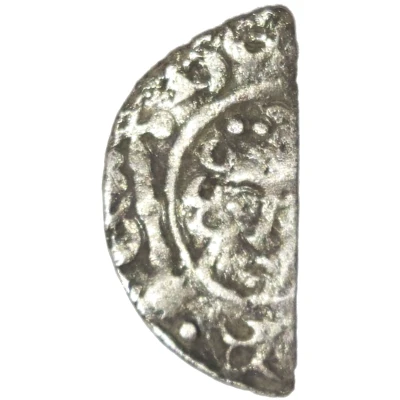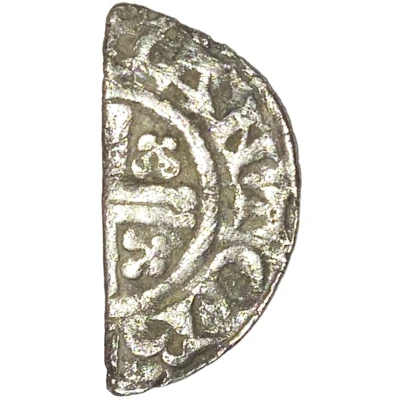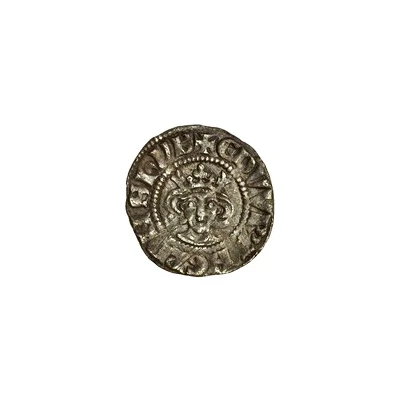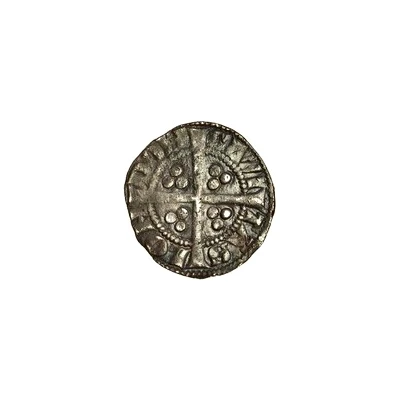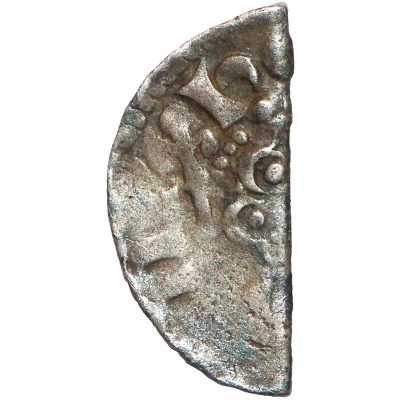
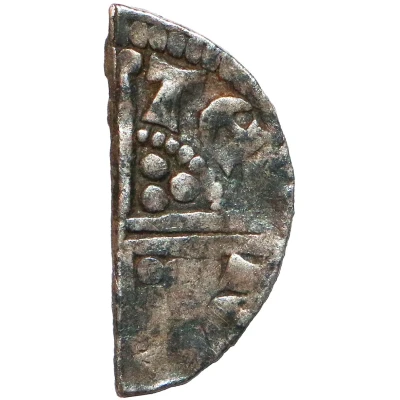

© John Conduitt (CC BY-SA)
½ Penny - Henry III Long Cross type; with sceptre ND
| Silver | 0.61 g | 17 mm |
| Issuer | England (United Kingdom, British Overseas Territories and Crown Dependencies) |
|---|---|
| King | Henry III (1216-1272) Edward I (1272-1307) |
| Type | Standard circulation coin |
| Years | 1250-1278 |
| Value | ½ Penny (1⁄480) |
| Currency | Pound sterling (1158-1970) |
| Composition | Silver |
| Weight | 0.61 g |
| Diameter | 17 mm |
| Shape | Half circle |
| Technique | Hammered |
| Orientation | Variable alignment ↺ |
| Demonetized | Yes |
| Updated | 2024-10-08 |
| Numista | N#316386 |
|---|---|
| Rarity index | 82% |
Reverse
Voided long cross, trefoil of pellets in angles, moneyer/mint name around.
Script: Latin (uncial)
Lettering: ION [ON] [CAN] TER
Lettering (regular font): ION [ON] [CAN] TER
Translation: Ion of Canterbury
Comment
Numerous moneyer and mint name varieties exist.Uncut penny references:
Class 4 (Sp#1365-66) Obv legend starts at 12 o'clock;
Class 5 (Sp#1367-74) Obv legend starts at 10 o'clock;
Class 6 (Sp#1377) Crude bust with blobs for eyes (posthumous);
Class 7 (Sp#1378) Bust is finely rendered (posthumous).
Medieval coins were cut into halves and quarters to provide fractional denominations without the need to strike new coins. It is thought these were generally cut at the mint, although it is also likely to have happened during transactions. Cut halfpennies are known in England from Anglo-Saxon times (c. 750s) until Edward I introduced round farthings and halfpennies in 1279.
For further information on Long Cross pennies, please see: https://www.rodblunt.com/long-cross-pennies-classification.
Interesting fact
One interesting fact about the ½ Penny - Henry III (Long Cross type; with sceptre) ND (1250-1278) coin is that it was minted during the reign of King Henry III, who was only nine years old when he ascended to the throne. This coin was part of a series of coins minted during his reign, which aimed to stabilize the English currency after a period of economic turmoil. Despite being made of silver, the coin was not widely accepted in trade due to its small denomination and was eventually replaced by a larger denomination coin. Today, this coin is considered a rare and valuable collector's item, with some examples selling for thousands of dollars at auction.
